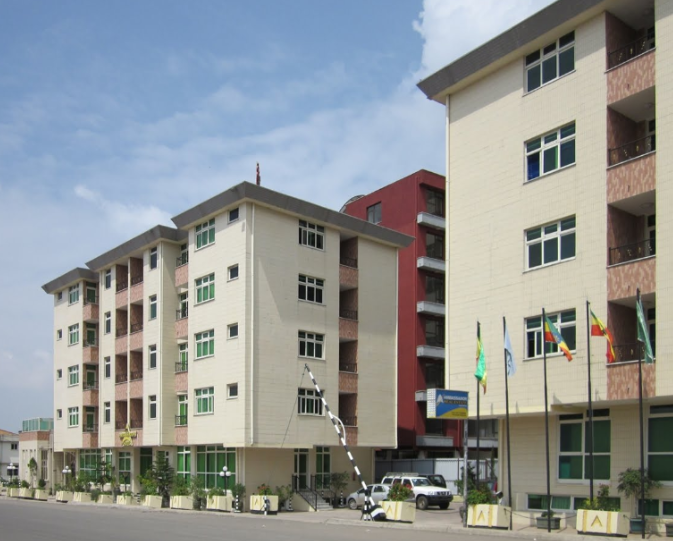
Exclusive Interviews | Jan 05,2020
Etenesh Yizengaw, 41, left her home in the Hanna Mariam neighbourhood at the crack of dawn this past Tuesday. Donning a scarf to withstand the bitter morning cold, the mother of four was heading to the nearby produce market to buy a month's supply of onions.
Working with a budget of 150 Br, Etenesh was looking to get 10Kg of onion. It is hard-earned money for a woman who toiled in life, brewing tella (traditional beer) and baking injera, for sale to the neighbourhood. Shopping bag in hand, she entered the vegetable and fruit market in Lafto of the Haile Garment neighbourhood, located southwestern Addis Abeba at a brisk walk. She quickly found a vendor but was dumbfounded by the news.
A kilogramme of onion, though particularly small, would set her back 32 Br. She found it more astounding that the price was a bargain compared to what other vendors were asking. Etenesh tried haggling the price down to 29 Br a kilo but the vendor would not budge. She left his stall, one of the hundreds at the market inaugurated in January this year.
"I don't remember a time onions were this expensive," she said.
Etenesh struggles to make ends meet and provide for her children. She has a monthly income of 4,000 Br, and though her husband bears part of the household expenses, including 1,200 Br renting two rooms, he does seasonal work. To Etenesh and millions like her, merely scraping by has been steadily growing more difficult as the cost of living in Addis Abeba skyrockets. One thing she could count on was "fair" prices for onion, a crucial ingredient in nearly all Ethiopian cooking. This changed last week.
Retailers sell a kilo of onion for up to 60 Br, twice the price before the new year holiday, and a 20 Br margin from what wholesalers offer the vegetable. Such an increase may not be a surprise for a country experiencing its highest food inflation rate in a decade, reaching a staggering 37pc in August 2021. But it validates that even basic food supplies are getting out of the reach of the public, particularly the poor.
It also comes as a shock for households under the poverty line, accounting for over a third of the country's population.
On most occasions, food prices contribute the main factor for inflationary pressure in the economy. They comprise 60pc of household expenses.
A staple food in almost every household, teff goes for as much as 5,000 Br a quintal, almost twice the price two years ago. A kilo of wheat costs almost 40 Br, showing a similar increase over the same period.
However, it was rare to see the prices of these grains driving the vegetable market in the same direction. The latter remained relatively stable.
Food inflation hit a staggering 37pc in August 2021 but even this does not explain how the price of a single kilogramme of onion jumped from four Birr a few months ago to 60 Br at retailers last week.
Onion was available in surplus across the country a few months ago. A kilo of onion was sold for a mere four Birr three months ago, and large amounts were dumped in the southern part of the country for lack of demand. The price barely covered transport costs.
It is not unusual to see a sudden rise in the price of onion. There was an upsurge in prices after the COVID-19 pandemic hit in March 2020. A kilo of onion was sold for 30 Br.
Kindu Awedew, a wholesaler of onions for eight years, has never before seen the dramatic increase in prices he witnessed last week.
He sold a kilo for 44 Br, attributing the sharp rise to supply shortages since the holiday earlier this month. Demand surged, and supply trailed behind.
Nearly 39,000ht of farmland across the country was used for farming onion. The total harvest was 346,000tn last year, according to data from the Ministry of Trade & Industry.
Harvesting onion is relatively quick; a farmer needs three to four months between planting and harvest. With irrigation, its ease to grow increased the country's average yield to 89 quintals a hectare. It grew by 25pc last year, almost three times higher than the yield from teff of a similar-sized plot of land.
Onion makes its way to the capital from farms in the rift valley areas in the south, such as Batu (Ziway) and Meqi, places a few hours drive away. But when farmers cultivate other crops because of heavy rainfall, unsuitable for onion farming, traders are forced to look elsewhere for supply.
The Lafto market was no different. The onion available in the market last week was sourced from the Somali or Harari regional states. Markedly longer distances to and from these farms imposed higher transportation costs, contributing to the price increase. Or that is what traders like Kindu in the Lafto market believe.
Ironically, retail prices for a kilo of onion in Harari Regional State have also jumped to as high as 60 Br, questioning the link between transportation costs and the escalated prices. Up to 30,000tn of onion was produced in the Harari Regional State, but officials report a shortage has gripped markets there as well.
"We're trying to understand the cause," said Shame Abdi, the Harari Agricultural Bureau deputy head.
The Addis Abeba Trade Bureau authorities believe they have reached the bottom of the issue in understanding what ails the onion market.
Akeberegn Wegagen, deputy head of the Bureau, attributed the shortfall in production to Meqi and surroundings experiencing heavy rainfall. But the shortfall in domestic production has not put its bearing on the prices as heavily as the suspension of imports from Sudan.
"These have impacted the supply chain," said Akeberegn.
The dramatically sharp increase in the price of onion comes at the height of the City Administration clamping down on the rising cost of living, which the authorities view as "economic sabotage." However, the Deputy Head concedes that onion prices are galloping up due to factors outside of alleged hoarding by traders.
"This cannot apply to onions, as they have a shelf life of just three days, making them hoard-proof," said the Deputy Head.
Assefa Admassie is an economics professor who once served as president of the Ethiopian Economics Association. He has published several studies on Ethiopia's economy with a focus on the agriculture sector. He attributes the unexpected surge in the price of onion solely to the country's agricultural practices.
The majority of the farmers in Ethiopia, where agriculture comprises a third of the GDP, use seasonal but traditional farming methods. According to Assefa, a lack of access to market information leads to a vicious cycle where farmers overproduce, fail to sell off their harvest, and produce less the following season.
"There need to be strong research institutes to forecast demand and supply," said Assefa.
Though the advice is sound, Assefa's recommendation would provide only long-term solutions. Consumers, including businesses, are desperate for things to return to normalcy.
Mekdes Welde, who has been running a restaurant for over two decades in the Saris neighbourhood, is one of those who are anxious to see the market leaves its irrationality behind. She was at the vegetable market looking for onions on the same morning Etenesh was there. Mekdes, too, was disappointed by what she saw.
She bought a quintal of onions at the price of 3,100 Br, more than double what she paid last time she was in the market. Her restaurant requires up to four quintals every month.
"If the prices stay this high, I'll have to reconsider prices on my menu," Mekdes told Fortune.
The authorities in the city administration are upbeat prices will return to normal soon.
"We're facilitating onion supply through cooperatives," said the Deputy Head.
His hopes are hinged on supplies sourced in the Somali Regional State, although he declined to disclose how much.
Farmers also believe onion prices will subside soon.
"It should ease in October," says Kumssa Gudina, a Meqi Batu Vegetable & Fruit Producers Cooperative Union manager, which has over 8,000 members.
Kumssa anticipates prices to fall back down to 15 Br a kilo.
Nevertheless, last week's episode leaves behind a lesson to show how vulnerable consumers like Etenesh and Mekdes are to sudden fluctuations in the market. Etenesh managed to buy half the amount she planned to take home that day.
PUBLISHED ON
Sep 26,2021 [ VOL
22 , NO
1117]

Exclusive Interviews | Jan 05,2020

Fortune News | Oct 01,2022

Agenda | Jul 03,2021

Fortune News | Dec 25,2021

Radar | Jun 07,2025

Fortune News | Jul 11,2021

Fortune News | Jul 06,2019

Radar | Jan 22,2022

Radar | Jan 23,2021

Radar | Aug 14,2021

Dec 22 , 2024 . By TIZITA SHEWAFERAW
Charged with transforming colossal state-owned enterprises into modern and competitiv...

Aug 18 , 2024 . By AKSAH ITALO
Although predictable Yonas Zerihun's job in the ride-hailing service is not immune to...

Jul 28 , 2024 . By TIZITA SHEWAFERAW
Unhabitual, perhaps too many, Samuel Gebreyohannes, 38, used to occasionally enjoy a couple of beers at breakfast. However, he recently swit...

Jul 13 , 2024 . By AKSAH ITALO
Investors who rely on tractors, trucks, and field vehicles for commuting, transporting commodities, and f...

Jun 28 , 2025
Meseret Damtie, the assertive auditor general, has never been shy about naming names...

Jun 21 , 2025
A well-worn adage says, “Budget is not destiny, but it is direction.” Examining t...

Jun 14 , 2025
Yet again, the Horn of Africa is bracing for trouble. A region already frayed by wars...

Jun 7 , 2025
Few promises shine brighter in Addis Abeba than the pledge of a roof for every family...